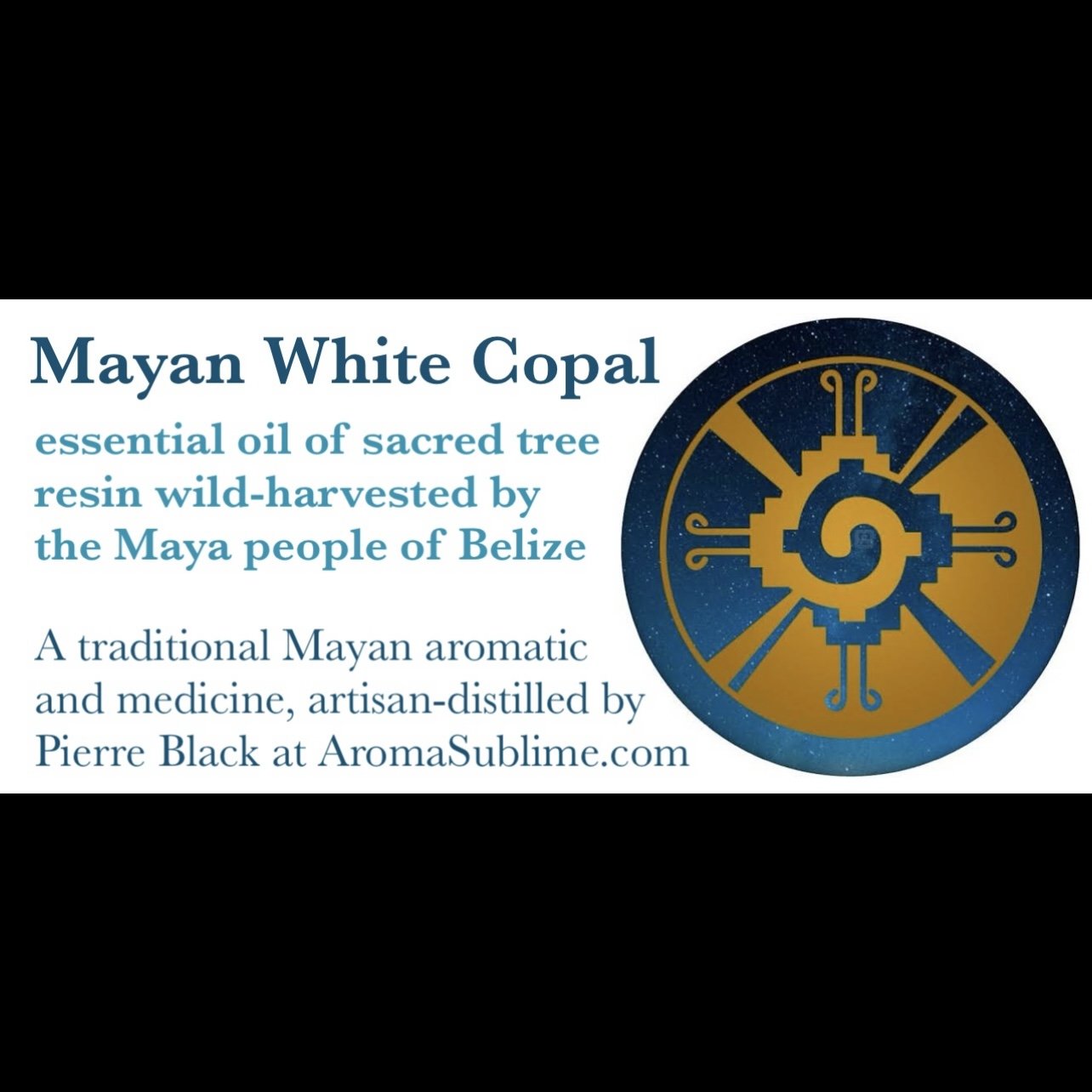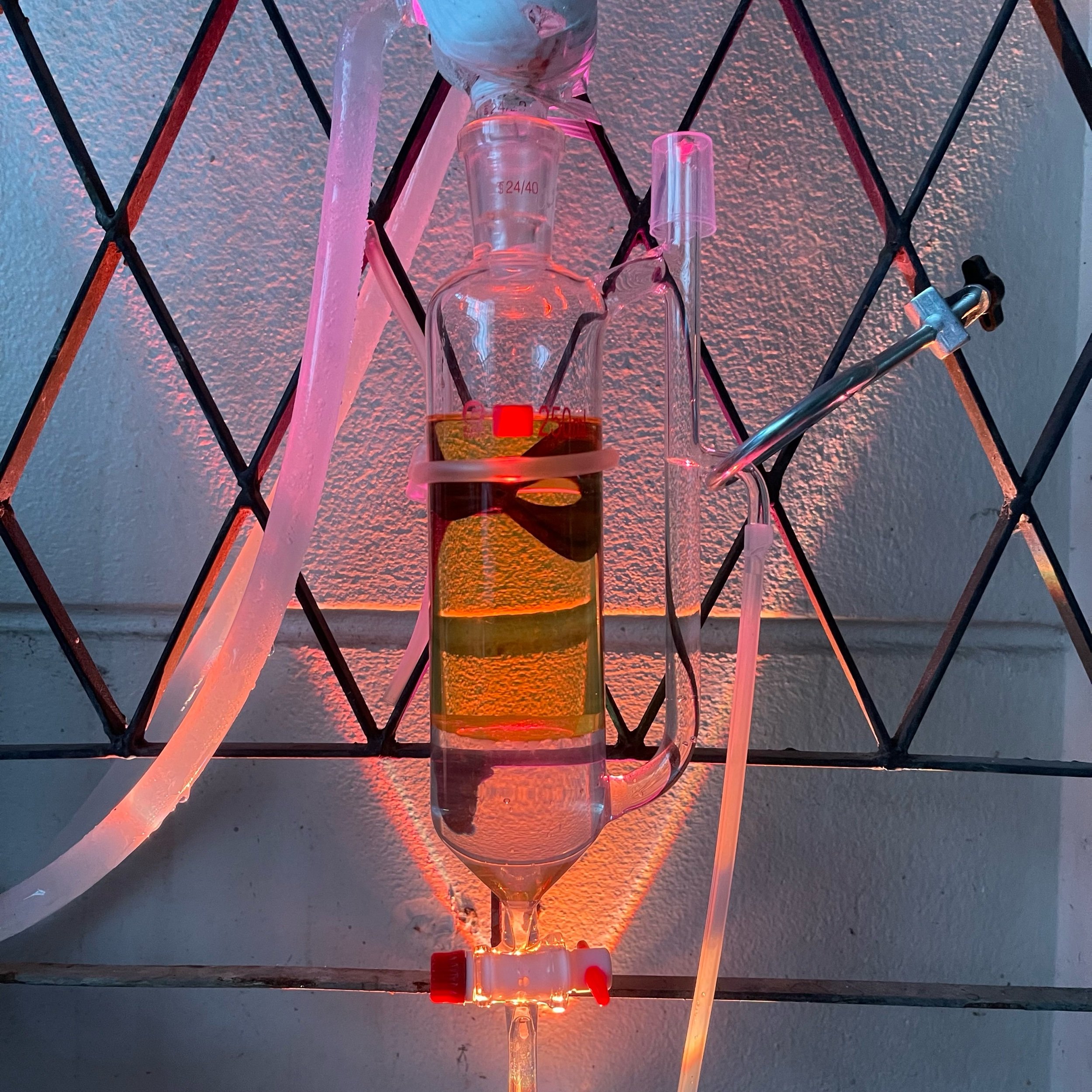 Image 1 of 8
Image 1 of 8

 Image 2 of 8
Image 2 of 8

 Image 3 of 8
Image 3 of 8

 Image 4 of 8
Image 4 of 8

 Image 5 of 8
Image 5 of 8

 Image 6 of 8
Image 6 of 8

 Image 7 of 8
Image 7 of 8

 Image 8 of 8
Image 8 of 8









Mayan White Copal essential oil 5ml • in-house distillation of Bursera bipinnata • Belize
Mayan White Copal essential oil 5ml • in-house distillation of Bursera bipinnata • Belize
Micro batch distillation by Pierre Black in Chiang Mai Thailand. Using fresh resin obtained directly from the Maya people of Belize, sustainably wild-harvested.
This unique micro-batch distillation captures the vibrant spirit of freshly harvested Mayan White Copal resin, sourced directly and sustainably from the Maya communities in Belize. Distilled in-house by Pierre Black in Chiang Mai Thailand using the freshest resin, this essential oil offers an exceptionally bright and authentic expression of Bursera bipinnata, reflecting both its sacred origins and the meticulous care taken in its small-scale production.
Botanical Source: The essential oil is derived from the resin of the tree Bursera bipinnata. It belongs to the Burseraceae family, the same family as Frankincense (_Boswellia_ spp.) and Myrrh (_Commiphora_ spp.).
Common Names: Besides Mayan White Copal, it's often referred to as Copal Blanco, Copal Santo, or Incienso del País (especially in Mexico).
Origin: Native primarily to Mexico and potentially parts of Central America, thriving in dry, tropical forests. Its use is deeply intertwined with Mayan and other Mesoamerican cultures.
Part Used: The resin (a hardened aromatic exudate from the tree, often obtained through tapping or natural exudation) is the source material.
Extraction Method: The essential oil is typically produced via steam distillation of the resin. This captures the volatile aromatic compounds, resulting in a different profile than burning the raw resin as incense.
Aroma Profile: The essential oil is generally described as: Bright, clean, crisp, and uplifting. Resinous at its core. Often possesses distinct citrusy top notes (lemony, sometimes piney). May have slightly sweet and woody undertones. Considered less heavy or smoky compared to the aroma produced when burning the raw resin.
Chemical Constituents: Primarily composed of monoterpenes. Common constituents often cited include alpha-pinene, beta-pinene, limonene, sabinene, and alpha-phellandrene, though the exact composition can vary.
Traditional Uses (Resin): The resin has a long history of use by Mayan and other Mesoamerican cultures: Sacred Incense: Burned extensively in spiritual ceremonies for purification, space clearing, offerings to deities, divination, and connecting with the spiritual realm. It's considered a vital element in rituals. Medicinal: Traditionally, the resin was sometimes used topically for skin ailments or potentially internally for respiratory issues (Note: This applies to the resin, not necessarily the essential oil for internal use). 10. Modern Uses (Essential Oil): Aromatherapy: Used for its perceived purifying, cleansing, and uplifting properties. Often diffused for space clearing, meditation, focus, and creating a sacred atmosphere. May be used in blends for respiratory support due to pinene content. Perfumery: Employed as a bright, resinous top or middle note in natural perfumery, adding lift and a clean, slightly citrusy-piney, sacred character. Spiritual Practices: Used aromatically (diffusion, inhalation) to support meditation, energy work, and ritual practices, echoing its traditional incense use.
Distinction: It's important to distinguish Mayan White Copal (Bursera bipinnata) essential oil from other types of Copal resin (like Black Copal or Golden Copal, which may come from different botanical sources or involve different processing) and from other Bursera species like Palo Santo (Bursera graveolens).
Safety: Generally considered safe for aromatic use and topical use when properly diluted. Standard essential oil precautions apply (perform a patch test, avoid ingestion unless under expert guidance, keep away from children and pets, consult a healthcare provider if pregnant, nursing, or have a medical condition).
Mayan White Copal essential oil 5ml • in-house distillation of Bursera bipinnata • Belize
Micro batch distillation by Pierre Black in Chiang Mai Thailand. Using fresh resin obtained directly from the Maya people of Belize, sustainably wild-harvested.
This unique micro-batch distillation captures the vibrant spirit of freshly harvested Mayan White Copal resin, sourced directly and sustainably from the Maya communities in Belize. Distilled in-house by Pierre Black in Chiang Mai Thailand using the freshest resin, this essential oil offers an exceptionally bright and authentic expression of Bursera bipinnata, reflecting both its sacred origins and the meticulous care taken in its small-scale production.
Botanical Source: The essential oil is derived from the resin of the tree Bursera bipinnata. It belongs to the Burseraceae family, the same family as Frankincense (_Boswellia_ spp.) and Myrrh (_Commiphora_ spp.).
Common Names: Besides Mayan White Copal, it's often referred to as Copal Blanco, Copal Santo, or Incienso del País (especially in Mexico).
Origin: Native primarily to Mexico and potentially parts of Central America, thriving in dry, tropical forests. Its use is deeply intertwined with Mayan and other Mesoamerican cultures.
Part Used: The resin (a hardened aromatic exudate from the tree, often obtained through tapping or natural exudation) is the source material.
Extraction Method: The essential oil is typically produced via steam distillation of the resin. This captures the volatile aromatic compounds, resulting in a different profile than burning the raw resin as incense.
Aroma Profile: The essential oil is generally described as: Bright, clean, crisp, and uplifting. Resinous at its core. Often possesses distinct citrusy top notes (lemony, sometimes piney). May have slightly sweet and woody undertones. Considered less heavy or smoky compared to the aroma produced when burning the raw resin.
Chemical Constituents: Primarily composed of monoterpenes. Common constituents often cited include alpha-pinene, beta-pinene, limonene, sabinene, and alpha-phellandrene, though the exact composition can vary.
Traditional Uses (Resin): The resin has a long history of use by Mayan and other Mesoamerican cultures: Sacred Incense: Burned extensively in spiritual ceremonies for purification, space clearing, offerings to deities, divination, and connecting with the spiritual realm. It's considered a vital element in rituals. Medicinal: Traditionally, the resin was sometimes used topically for skin ailments or potentially internally for respiratory issues (Note: This applies to the resin, not necessarily the essential oil for internal use). 10. Modern Uses (Essential Oil): Aromatherapy: Used for its perceived purifying, cleansing, and uplifting properties. Often diffused for space clearing, meditation, focus, and creating a sacred atmosphere. May be used in blends for respiratory support due to pinene content. Perfumery: Employed as a bright, resinous top or middle note in natural perfumery, adding lift and a clean, slightly citrusy-piney, sacred character. Spiritual Practices: Used aromatically (diffusion, inhalation) to support meditation, energy work, and ritual practices, echoing its traditional incense use.
Distinction: It's important to distinguish Mayan White Copal (Bursera bipinnata) essential oil from other types of Copal resin (like Black Copal or Golden Copal, which may come from different botanical sources or involve different processing) and from other Bursera species like Palo Santo (Bursera graveolens).
Safety: Generally considered safe for aromatic use and topical use when properly diluted. Standard essential oil precautions apply (perform a patch test, avoid ingestion unless under expert guidance, keep away from children and pets, consult a healthcare provider if pregnant, nursing, or have a medical condition).